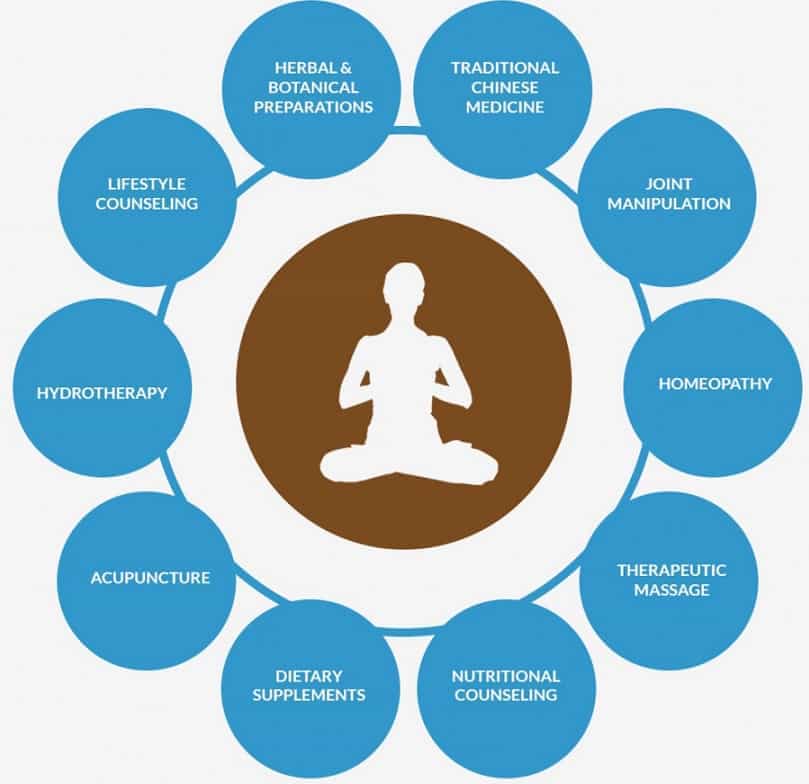Improve Your Health & Wellness With The Big A-Z List Of Complementary & Alternative Therapies
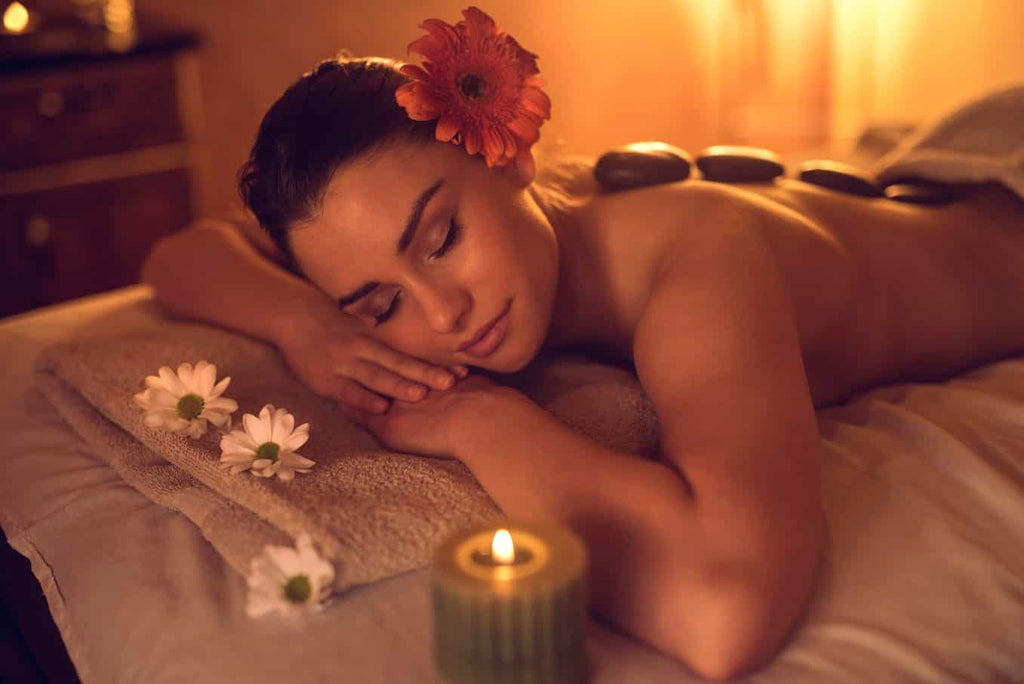
Ever been curious to try complementary therapies, but not sure what it’s all about or which one to choose? Or, looking for a solution to a particular problem or concern you’re having, but unsure as to the best way to go about treating it?
To help you get started, we’ve put together a big list of complementary therapies, and listed some of the main benefits of each one, in order to give you an introduction to the wide and varied world of natural therapies and help you choose the right treatment.
We’ll be adding to this list constantly, so be sure to bookmark this page, and keep referring back to it as a kind of glossary and handy reference point to the huge range of alternative and holistic therapies that are helping people improve their health and wellness every single day. Let’s begin.
Acupressure
What it is: Acupressure is an ancient form of therapy which involves applying pressure to certain points around the body in order to stimulate the body’s own healing processes, and bring about positive health benefits. Pressure is normally applied with the fingers, and the process is so simple to learn, you can use it on yourself, or have a licensed practitioner treat you for even greater health benefits.
Benefits:
- Boosts the immune system
- Relieves stress
- Relieves headaches
- Alleviates other aches and pains around the body
- Increases circulation
More information about acupressure.
Acupuncture
What it is: Acupuncture is a type of traditional Chinese Medicinal therapy related to acupressure in the sense that it focuses on stimulating certain healing points around the body, called acupoints. These points inmin turn stimulate the body’s own healing mechanisms. Rather than using the fingers to stimulate these areas, acupuncture involves the insertion of very tiny needles into the top layers of the skin and muscle by a registered acupuncture practitioner.
Benefits:
- Clears energy blockages in the body
- Relieves sore, spasming muscles
- Alleviates stress
- Aids better, deeper sleep
- Strengthens the immune system
More information about acupuncture.
---
Alexander Technique
What it is: The Alexander Technique is a physical method of retraining the body to “unlearn” negative physical habits and patterns of movement in order to allow the body to move more freely and naturally. The technique can be learned from an accredited teacher, by attending an in-person course, or it can be self-studied. Basically it allows you to identify tension patterns that are affecting your posture and the means to correct them. This complimentary therapy seems popular with musicians who often hold a tense posture for extended periods of time.
Benefits:
- Allows you to move more freely and comfortably
- Relieves stress and tension in the body
- Helps alleviate pain from repetitive strain injury or carpal tunnel syndrome
- Alleviates backache, and pain associated with a stiff neck and shoulders
- Can help makes sitting at a computer for long periods of time more comfortable
- Helps you feel more comfortable in your own body
More info on the Alexander Technique.
Apitherapy
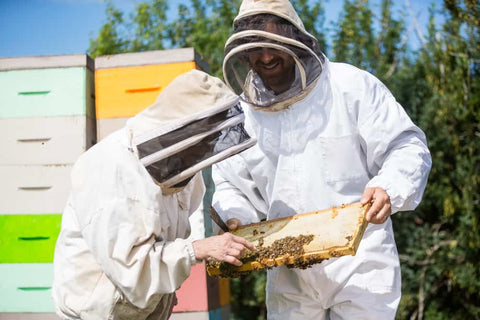
What it is: Apitherapy is a type of therapy which involves the medicinal use of bees and bee products for their many health benefits. It has origins dating back thousands of years, and involves various applications of bee products including bee pollen, beeswax, royal jelly, propolis, honey, and bee venom. Depending on which specific product is used, different bee products each have a multitude of benefits for certain health concerns.
Benefits:
- Bee venom stimulates a healthy immune response
- Reduces pain and inflammation in the joints caused by conditions such as arthritis
- Royal jelly and propolis treats burns
- Propolis is a powerful antibacterial and antifungal
- Honey is a well-known antibacterial
More information about apitherapy.
Aromatherapy

What it is: Aromatherapy is the method of using the scents and aromas of essential oils to alleviate a range of emotional and physical concerns, from stress and anxiety, to blocked sinuses, pain and cognitive function. Scents from essential oils can be diffused in a traditional oil burner with a candle, or using a more modern aromatherapy diffuser (which often has the added benefit of helping to humidify the air in a room.)
Benefits (these are dependent on the type of aroma/scent used):
- Induces sleep
- Relieves stress
- Alleviates headaches
- Aids digestion
- Strengthens the immune system
- Helps to treat a wide range of common ailments
More info on Aromatherapy.
Auriculotherapy
What it is: Auriculotherapy involves the stimulation of the external part of the ears (the auricles) in order to treat a number of health conditions and concerns. It was first developed in 1957, using the principles of Traditional Chinese Medicine, and involves using pressure (either with small acupuncture needles, or a wand which applies a gentle electromagnetic current) on certain points on the outer ear in order to treat certain conditions.
Benefits:
- Helps treat insomnia
- Alleviates back and neck pain
- Helps treat certain emotional disorders
- Alleviates stress & anxiety
More information about auriculotherapy.
Autogenic Training
What it is: Autogenic training is a technique comprised of 6 standard exercises which you can learn in order to teach your body to feel heavy, deeply relaxed and warm. Exercises are performed while sitting in a quiet and comfortable position, and it can be thought of as a more advanced form of meditation and self hypnosis. The exercises can be learned from an instructor, or on your own, and it is recommended that you spend a few months mastering each exercise at a time to fully reap the benefits. There are many guided forms of autogenic training online, such as the video above.
Benefits:
- Anxiety, stress relief and insomnia are the main benefits of this complimentary therapy
- Some claims that autogenic training can help to alleviate digestive issues, constipation/diarrhea, ulcers, headaches and asthma
- Lowers blood pressure in those with high blood pressure
- Some claims the technique can assist with the management of thyroid problems, such as hypothyroidism or hyperthyroidism
Instructions relating to the video and Autogenic Training in general:
In advanced training, it is not necessary to repeat every formula 6 times. So here every formula is repeated 3 times. This manual is for the daily practice and helps to reduce stress and is suitable for an advanced basic level. But also many beginners confirm that this guide will help them to relax deeply.
As you practice, try to combine phrases with images. This will help a lot to create the feeling of heaviness, warmth and relaxation. Every image that you find relaxing is helpful. It consists of the following exercises:
1. Heaviness Formula "My arms and legs are heavy" e.g. Imagine that you are ten times heavier then normal.
2. Warmth Formula "My arms and legs are pleasantly warm" e.g. Imagine that you take a sun bath. Warm sun rays caress your body. Feel the warmth spreading through your arms into your hands and through your legs into the feet
3. Heart Formula (just feel your heartbeat)
4. Breathing Formula "My breathing is slow and regular" e.g. Imagine that your breathing is like a gentle breeze, which smooths the troubled Sea
5. Solar Plexus Formula "My Solar Plexus is warm" e.g. Imagine that there´s a glowing sun in the center of your body. Feel the energy and the warmth of the sun.
6. Cool Forehead Formula "My Forehead is pleasently cool and relaxed" e.g. Imagine that a gentle cool breeze caresses your forehead.Cancelling is necessary! "Arms firm, Breathe deeply, Open eyes"... Bend your arms vigorously, then breathe deeply and open your eyes.
More info on Autogenic training.
Autosuggestion
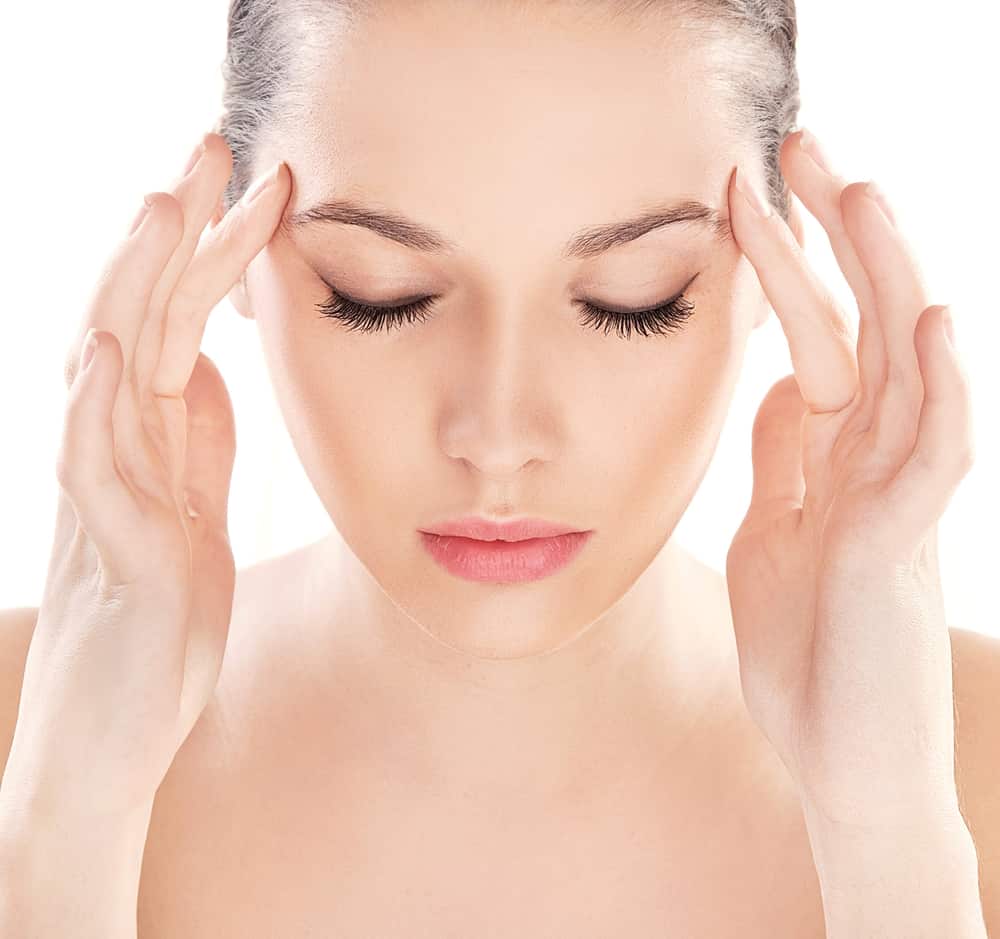
What it is: Autosuggestion is a psychological technique in which you learn how to guide your own thoughts, feelings and behaviours simply through the power of self-suggestion. It can be thought of as a form of mild self-hypnosis, and takes positive self talk one step further into actually causing strong positive shifts in your overall sense of wellbeing and happiness. Many see it as a way to directly influence the sub-conscious mind to improve one's life in any way that you desire. Heard of the law of attraction? Well this is kind of the 'official' name.
Benefits:
- Helps create new positive thought patterns
- Eases stress, anxiety and depression
- Eliminates bad habits
- Resolves relationship problems
More information on Autosuggestion.
Ayurveda
What it is: Ayurveda is an ancient Indian form of medicinal practice which focuses on bringing balance back to the body and the mind in order to both prevent and cure disease. Depending on the health needs of the individual, Ayurvedic treatments may involve a combination of special herbs, diet changes, yoga practice, acupuncture, meditation and massage.
Benefits:
- Focuses on preventing disease, rather than simply curing it
- Easy to incorporate many aspects of Ayurveda into your daily routine
- Lowers blood pressure
- Alleviates stress
- Increases fertility and libido
More information about Ayurveda.
Bach Flower Therapy

Image credit: http://aliciadelarosa.com/
What it is: Bach Flower therapy is a treatment involving the use of Bach Flower Remedies - a series of 38 flower therapies developed in 1930 by an English homeopath, Edward Bach. Each of the 38 remedies are made up of a mixture of water, brandy and diluted flower essences derived from petals, with each of the specific formulas being developed to treat a certain emotion or negative state of mind one may be suffering from. The remedies are taken by adding a few drops to a glass of water and sipping it, or by dropping the remedies directly onto the tongue.
Benefits (depending on the specific remedy):
- Improves confidence
- Treats shock
- Eases depressive thoughts
- Allows you to gain greater clarity on your direction in life
More information on the Bach Flower Remedies.
Chiropractic
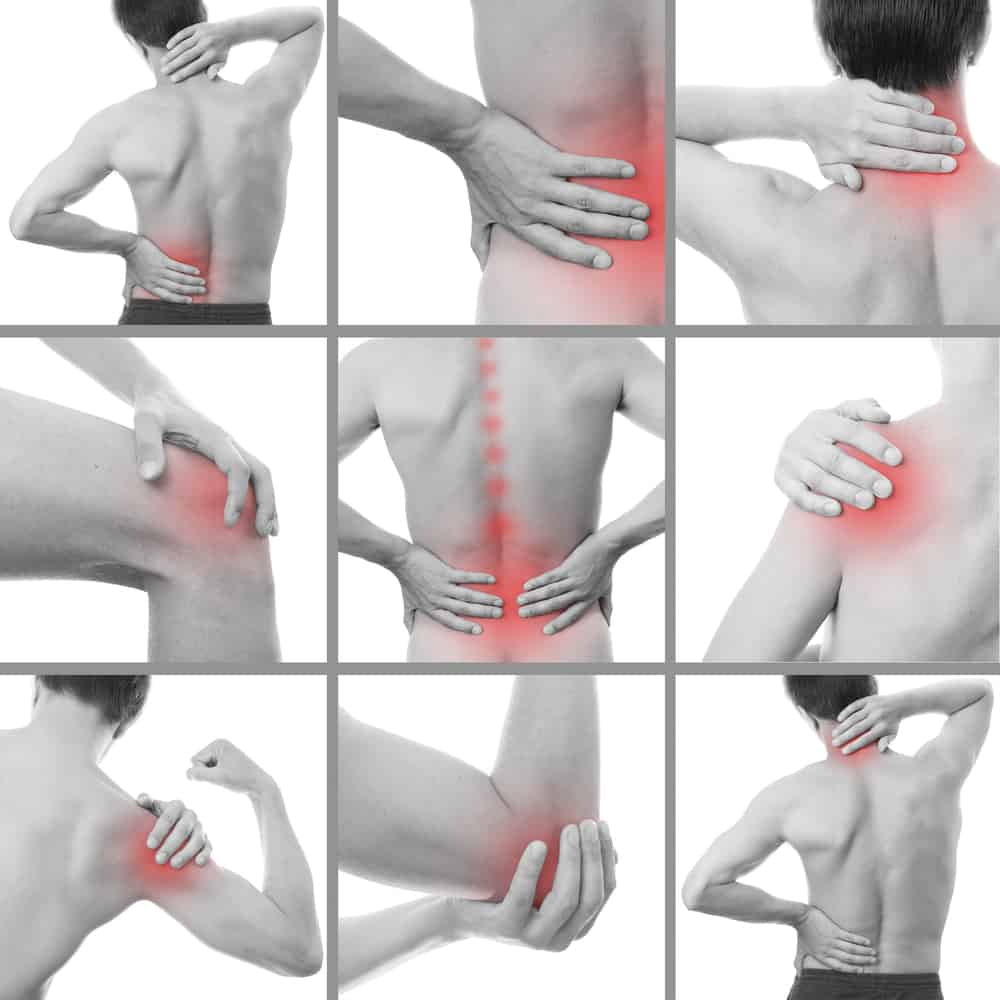
What it is: Chiropractic involves the treatment of certain neuromuscular conditions and pain through the physical manipulation and adjustment of the spine. Chiropractic sessions are always performed by a licensed and trained chiropractor, who will identify the root cause of one’s pain, and prescribe a course of treatments to help alleviate it and prevent further pain in the future.
Benefits:
- Alleviates back and neck pain
- Reduces muscle soreness
- Treats headaches
- Treats mild scoliosis (curvature of the spine)
- Helps treat sport injuries
- Helps improve posture
More information about chiropractic.
Crystal healing
What it is: Crystal healing, also sometimes referred to as gemstone treatment or crystal therapy, involves the use of special crystals to treat different health concerns. It is based on the principle that certain natural gemstones and crystals each have their own effects on the energy fields of the body. Crystals are either worn as jewellery, carried by the person in their pockets or bags, or placed strategically around the home or workplace where their healing energies can have the greatest benefit.
Benefits:
- Depending on the type used, crystals can treat a range of emotional concerns
- Promotes a calm and centred mind
- Crystals do not lose their energy over time
- Easy to use by anyone
More information about crystal healing.
Cupping therapy

What it is: Cupping therapy is a form on Ancient Chinese Medicine, which involves the placement of heated glass suction cups onto the skin in order to form a vacuum and draw blood to the surface of the skin in these areas. It is performed by a licensed practitioner, who will determine the specific points on the body where the cupping is needed, and how many cups to use. Cups are usually left on the skin for between 5 and fifteen minutes.
Benefits:
- Helps sore, overworked muscles recover faster
- Promotes circulation
- Deeply relaxing
- Releases toxins from the body
More information about cupping therapy.
Ear candling
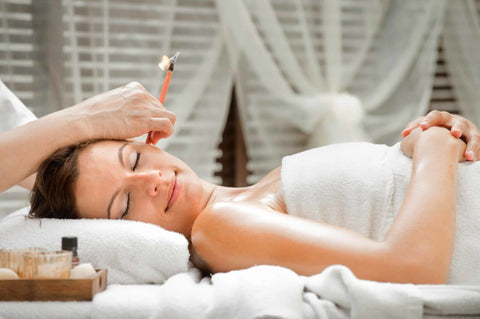
What it is: Ear candling is a type of therapy which involves inserting one end of a special type of candle into the ear, and lighting the other end with a small flame. One usually lays on their side while the treatment is taking place. It can be performed at home, with the assistance of someone to light the candle for you, or in a practitioner's office.
Benefits:
- Helps soften and extract built up ear wax from the ear canal
- Helps relieve sinus pressure
- Can help treat tinnitus (ringing in the ears)
- Deeply relaxing
More information about ear candling.
Electromagnetic therapy
What it is: Electromagnetic therapy is a type of treatment which revolves around the premise that all functions in the body are controlled by electromagnetic waves, and that a disturbance in the frequency of these electromagnetic waves is what causes disease. The therapy itself involves the use of electromagnets by a practitioner to rebalance the currents in the body, and help treat a range of disorders.
Benefits:
- Non invasive
- Aids relaxation
- Rebalances imbalances in the body’s energy field
More information about electromagnetic therapy.
Enemas
What it is: Enema therapy is a type of therapy which involves using water or other fluids to flush and cleanse out the colon and lower bowels. There are different types of enema, with coffee enemas being one of the most popular in recent times. The aim of enemas is to cleanse the bowels of uneliminated waste that has built up in the digestive system over a number of years, and leave you feeling lighter and less sluggish straight away.
Benefits:
- Aids digestion
- Reduces bloating and stomach discomfort
- Detoxifies the body
- Increases energy levels
- Can be performed yourself at home with the right equipment
More information about enemas.
Feldenkrais method
What it is: The Feldenkrais Method is an educational technique developed by Israeli physicist Moshé Feldenkrais, and involves increasing your self-awareness through specific bodily movements and exercises. Through slow repetition of movements, you “unlearn” inefficient habitual movement patterns which are causing strain to certain areas of your body. It is similar to the Alexander Technique, in the sense that it is a learned method, rather than a therapy which involves manipulation of the muscles or bones (such as with physiotherapy or chiropractic).
Benefits:
- Unlearn bad habits of movements (such as bad posture)
- Alleviates pain associated with stiff muscles and joints
- Improves posture and balance
More information about the Feldenkrais Method.
Hypnotherapy

What it is: Hypnotherapy is a form of psychotherapy in which the patient is firstly put into a state of hypnosis, then on a subconscious level, encouraged by the hypnotherapy practitioner to alter their subconscious and create new thoughts, feelings and patterns of behaviour.
Benefits:
- Aids relaxation
- Helps with acute or chronic pain management
- Helps manage or eliminate addictions (including drugs and alcohol)
- Can help treat eating disorders
More information on hypnotherapy and hypnosis techniques.
Moxibustion
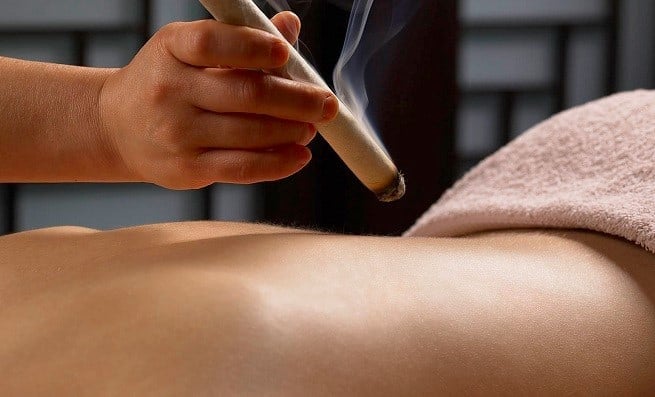 Image Credit: www.esbaspaoriental.com/spa/salud
Image Credit: www.esbaspaoriental.com/spa/salud
What it is: Moxibustion is a traditional Chinese therapy which involves burning the dried Chinese herb “moxa” close to the skin to alleviate a range of ailments and health concerns. The goal is to warm regions of the body under which the herb is burnt, hence stimulating circulation and helping to increase the flow of blood and qi to the area.
Benefits:
- Pain relief
- Strengthens immune system
- Can help to change breech presentation of babies
More information on Moxibustion.
Music therapy
What it is: Music therapy involves the use of music-based interventions to help treat and alleviate a range of emotional, cognitive, and physical concerns. “Interventions” are supervised by an accredited musical therapy professional, and can include creating music, singing, moving to music, listening to music, or a combination of all of these. It is a powerful and scientifically proven type of therapy that can be used to treat people from all age groups, including unborn infants still in the womb.
Benefits:
- Prenatal stress relief
- Treats mood disorders
- Improves cognitive function in children with autism
- Reduces blood pressure
- Aids with anxiety and stress relief
- Treats symptoms and behaviours associated with dementia and alzheimer's
More information on music therapy.
Naturopathic medicine
Image source: http://visual.ly/what-naturopathy
What it is: Naturopathic medicine can be seen as an “umbrella” term which encompasses all forms of natural, holistic, herbal and ancient medicinal treatments, such as acupuncture, reflexology, meditation, ear candling, aromatherapy, and more.
Benefits:
- Avoid harsh chemical or medical interventions when they’re not needed
- Some are more cost-effective than traditional medical interventions
- Improves overall health and wellbeing simply and easily
- Potentially help alleviate, prevent or cure a large number of conditions and ailments
More information on Naturopathy
New Thought
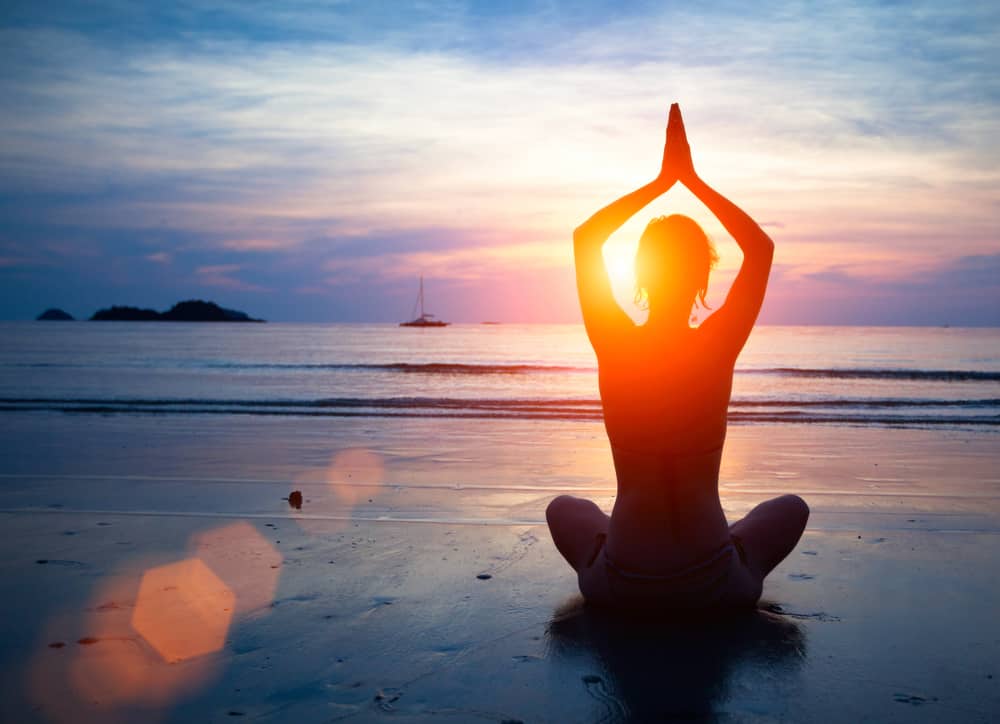
What it is: New Thought (also sometimes called the Mind Cure or Mind Science) is a movement that asserts that thoughts and beliefs have a strong effect on our reality, including things and people around us. The overarching principle is that thinking creates our reality, and that changing our thoughts can directly change our lives. There are both religious and secular versions of New Thought and it is the same sort of concept as autosuggestion.
Benefits:
- Heals certain physical or emotional ailments through the power of thought
- Encourages positive thinking and emotions
More information about New Thought.
Neuro-linguistic programming

What it is: Neuro-linguistic programming (NLP) is a personal-development and psychotherapy method which states that behavioural patterns, language and neurological processes are all connected, and can be altered to achieve a specific goal or treat a certain concern. An NLP session will typically begin with the practitioner finding out more about the client, about their specific goals and desires, and then performing a series of verbal “interventions”, which may involve simply speaking to the client using certain words, or asking them to imagine themselves in the future, achieving a certain goal.
Benefits:
- Treats depression
- Eliminates phobias
- Helps many achieve their life goals
More information about Neuro-linguistic programming.
Nutritional healing
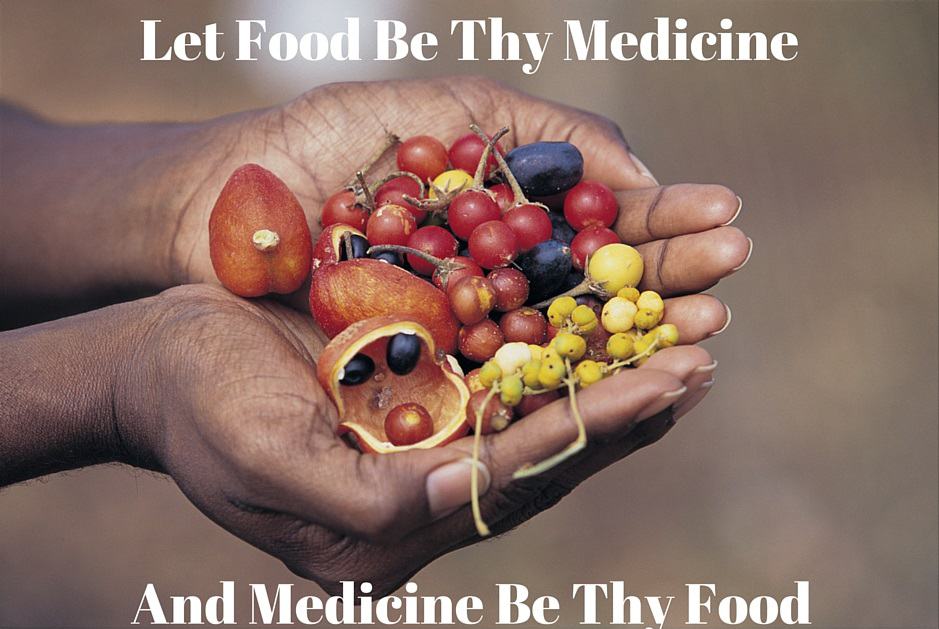
What it is: Nutritional healing involves consuming a certain diet comprised of natural foods, supplements and herbs in order to treat certain ailments and disorders. Nutritional healing places a strong focus on the natural benefits of vegetables, fruits (usually organic and non-genetically modified), and may also involve abstinence from eating certain types of foods which are seen to be detrimental to an individual’s health.
Benefits:
- Strengthens the immune system
- Helps with certain nutritional deficiencies
- Can be used very safely in conjunction with more “mainstream” medicines and therapies
More information on nutritional healing.
Nutritional supplements

What it is: Nutritional supplements can refer to any type of supplement which is ingested for nutritional benefit. These can include manufactured supplements, as well as natural herbal supplements in the form of pills, tablets, liquids, powders, teas, or food items. Different combinations of nutritional supplements can be used to treat certain concerns, or help you achieve certain health goals, such as weight loss, improved energy, better sleep, better concentration, or relief from pain issues such as joint pain.
Benefits:
- Helps to fill nutritional “gaps” in your diet which may not be filled by diet alone
- Improves mood and energy levels
- In most cases, can be used in conjunction with other therapies and medications (check with your medical professional first)
View this handy A-Z list of nutritional supplements and their uses.
Orgonomy
What it is: According to the American College of Orgonomy, Orgonomy is “the natural science of orgone energy and its functions.” Orgone energy, according to the person who first described it, Wilhelm Reich, is the energy from which all matter in the universe is created. Medical orgone therapy involves working with a special orgone therapist, and it aims to treat a range of emotional disorders ranging from stress and depression, low sex drive, eating disorders, and tourette’s syndrome.
Benefits:
- Helps you become more aware of your emotions
- Treats post traumatic stress disorder (PTSD)
- Can help alleviate neuroses such as obsessive compulsive disorder (OCD)
- Treats those with bipolar disorder
More information on Orgonomy.
Orthomolecular medicine
What it is: According to the Journal of Orthomolecular Medicine, Orthomolecular medicine is “the practice of preventing and treating disease by providing the body with optimal amounts of substances which are natural to the body.” At its core, it involves nourishing the body with the correct amounts of nutrients for your particular needs, including proteins, carbohydrates, fats and oils, minerals, vitamins, and of course, water. It can be seen as a type of nutritional healing.
Benefits:
- Helps prevent of a range of lifestyle-related diseases
- Reduces inflammation in the body
- Improves the immune function
- Increase energy and overall wellbeing
More information on orthomolecular medicine.
Osteomyology
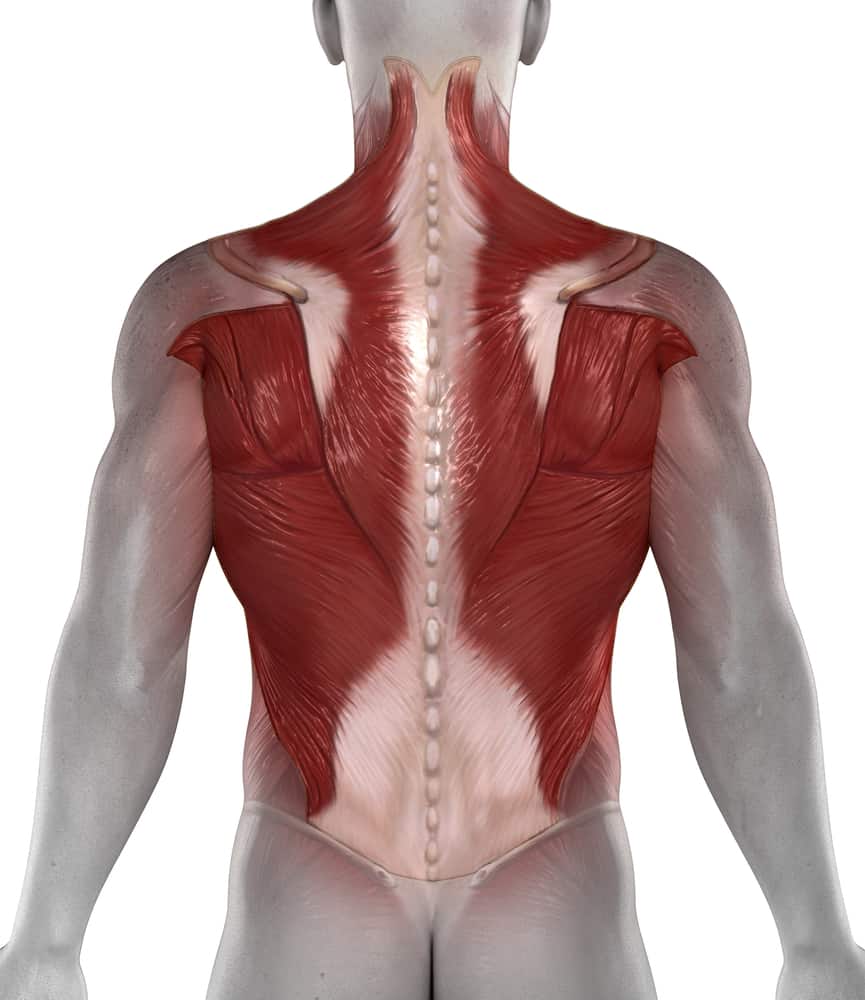
What it is: Osteomyology, often also known as Neurosteomyology, is closely related to chiropractic and osteopathy, and involves the study and manipulation of the muscles and bones by a registered osteomyologist in order to bring about a range of health benefits. As opposed to chiropractic, Osteomyology focuses more so on the muscles than the bones.
Benefits:
- Releases stiff joints
- Alleviates muscle stiffness and soreness
- Help improve posture
More information on Osteomyology.
Osteopathy
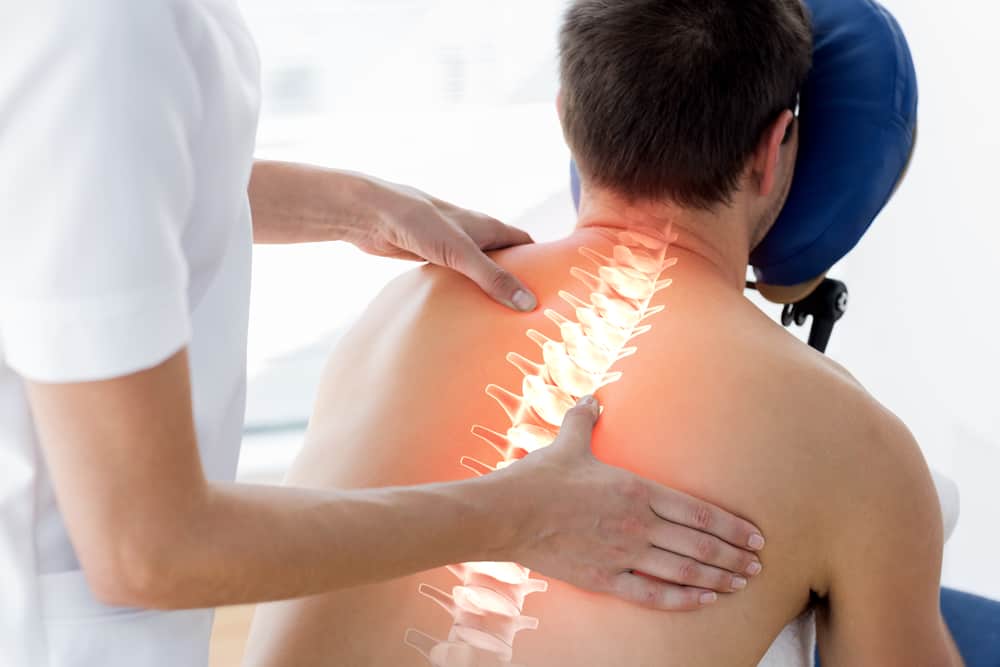
What it is: Osteopathy is an alternative medical practice which centres around the manual manipulation of the muscles, bones and joints by a registered practitioner. Note that this definition applies to the UK, Europe, and Oceania, and while the definition of osteopathy differs in the USA, where an osteopath is generally anyone licensed to practice all types of medicine.
Benefits:
- Releases stiff joints and muscles
- Improves joint and limb mobility
- Improves posture
- Alleviates nerve pain and associated headaches
- Aids with digestive disorders
More information on osteopathy.
Pilates
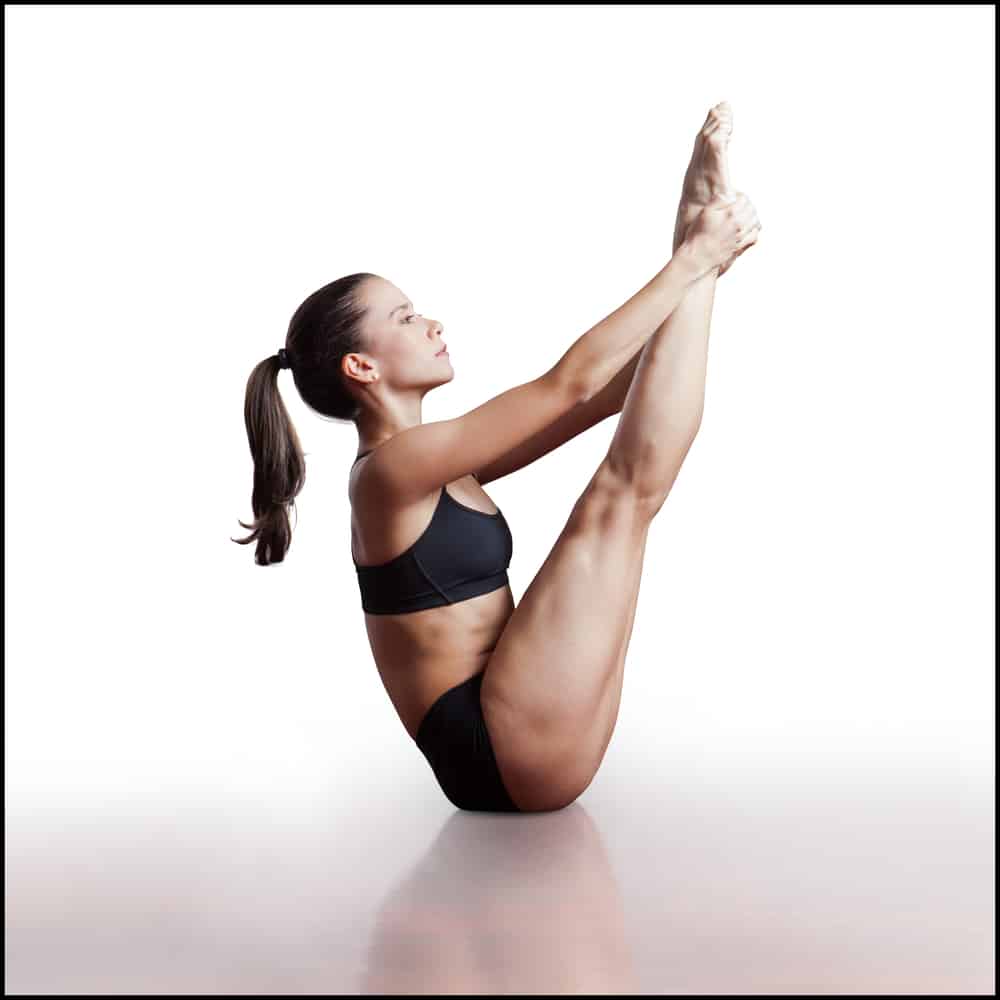
What it is: Pilates is a fitness system developed by Joseph Pilates, the son of a gymnast father and a naturopath mother. It involves performing a series of controlled exercises performed either on the floor or standing upright, and can be done with just the body, or with special aids such as a Pilates ring, ball, or a Pilates reformer machine. Pilates can be practiced at home with the aid of DVDs or online videos, or by attending an in-person class delivered by a qualified instructor (recommended for those who are just starting out)
Benefits:
- Improves balance, coordination and posture
- Strengthens muscles and core
- Improves flexibility
- Great for people who cannot participate in high impact exercise
More information on Pilates.
Polarity Therapy
What it is: Polarity therapy focuses on the interdependence of mind, body and spirit, and how they interact with each other based on the universal laws of energy: attraction, repulsion and neutrality. The practise involves energy-based bodywork performed by a specialist in a polarity session, as well as specific diet and exercise guidelines and self-awareness exercises.
Benefits:
- Balances the body’s flow of energy
- Treats allergies
- Stimulates the immune system
- Aids with joint and muscular pain relief, including pain associated with arthritis
- Treats stress, anxiety and depression
- Increases energy
More information on polarity therapy.
Pranic healing
What it is: Pranic healing is a type of energy healing developed by GrandMaster Choa Kok Sui, and aims to re-balance the flow of energy in the body. Pranic practitioners do not touch the subject, but instead focus on drawing energy from their surroundings and channeling it through the subject’s body in order to re-establish balance in your body’s energy.
Benefits:
- Activates your body’s own self repair system
- Non-invasive
- Increases energy and stamina
- Heals common colds and flus
- Reduces stress
- Improves self esteem
- Helps tackle other mental problems such as depression or addiction.
More information on pranic healing.
Qigong

What it is: Qigong (pronounced “chee-gong”) is an ancient Chinese practice which involves using specific postures, movements, meditation and breathing practices in order to balance the body’s flow of energy and achieve higher states of consciousness and awareness. It is both similar and related to Tai Chi.
Benefits:
- Improves balance and coordination
- Alleviates stress and anxiety
- A great low-impact form of physical activity
- Improves cardiovascular health
- Speeds up recovery time from surgery and other medical procedures
More information on Qigong.
Radionics
What it is: Radionics is a type of therapy in which specific diseases are detected and treated using waves of energy similar to radio waves. It is based around the principle that normal, healthy people's bodies give off a certain frequency of energy frequencies, while those affected by certain diseases or health conditions will give off different energy frequencies. Treatment involves the rebalancing of these energy frequencies.
Benefits:
- Possible to detect illnesses and diseases at an early stage
- Non-invasive
More information about Radionics.
Rebirthing (breathing)
What it is: Rebirthing is a special type of conscious, controlled breathing technique which is thought to help cure certain conditions and effectively deal with traumatic, repressed childhood memories. Rebirthing sessions are usually conducted one-to-one between the client and their practitioner, or as part of a workshop with multiple people in the room.
Benefits:
- Brings greater self-awareness
- Treats anxiety and depression
- Can help with relationship issues
- Helps those who simply want to get more enjoyment out of life
More information on Rebirthing.
Reflexology
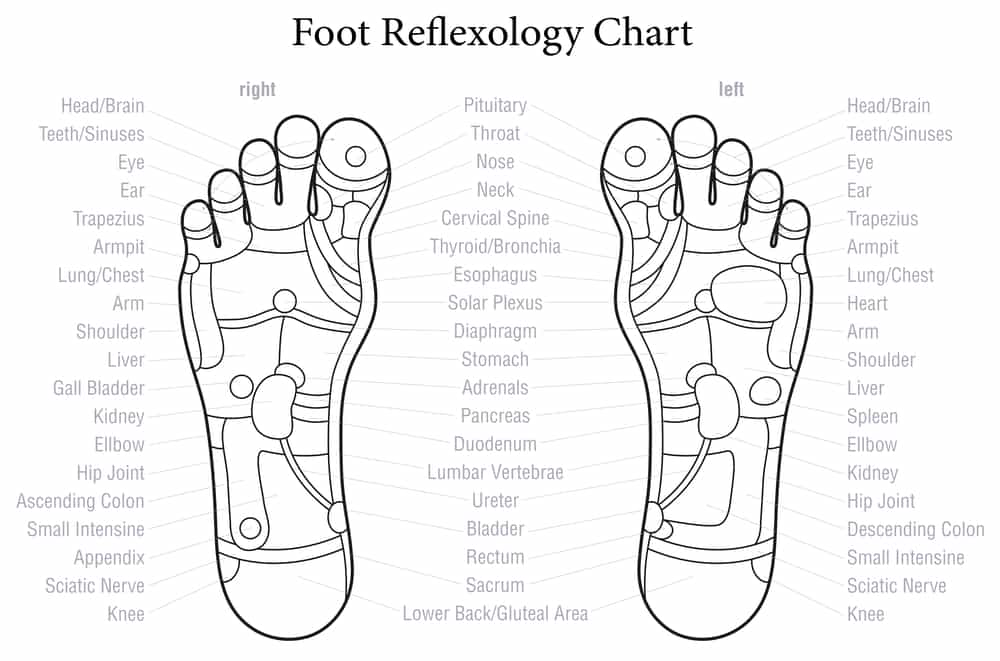
What it is: Reflexology is a type of therapy which involves applying pressure to certain areas of the foot and hands. It is based on the belief that certain regions of the foot and hands are directly connected by nerves to other areas and organs and muscles around of the body (such as the heart, lungs, kidneys, eyes, or brain) and that applying pressure to these areas helps to stimulate recovery and good health in its corresponding organ. Reflexology can be performed by a trained practitioner in a reflexology session, or special reflexology products (such as shoes, for example) can be purchased for everyday use.
Benefits
- Stimulates nerve function
- Relaxes and relieves stress
- Relieves tired and tense feet and ankles
- Eases anxiety and stress
- Is beneficial for babies and small children as well
More information on reflexology, and view the reflexology foot map.
Reiki
What it is: Reiki is a traditional Japanese therapy which centers around the use and transfer of energy from the healer’s body to that of the subject in order to stimulate the body’s own natural healing processes, relieve stress, and generate overall feelings of relaxation and wellbeing.
Benefits:
- Improves mental clarity and wellbeing
- Helps to alleviate physical pain in the limbs, muscles or joints
- Aids sleep and relaxation
- Stimulates the immune system
- Relieves pain from headaches and migraines
- Reduces stress
More information on Reiki.
Rolfing (Structural Integration)

What it is: Rolfing is a form of physical manipulation therapy developed by biochemist Dr. Ida Rolf. It is based on the belief that all physical and emotional problems and discomfort stem from improper alignment of the body’s fascia (the connective tissue located just under the skin). By aligning them through a series of 10 sessions performed by a registered practitioner, subjects can achieve not only better posture, but greater overall wellbeing and health. Rolfing sessions incorporate fascial pressure, massage and gentle manipulation and realignment techniques.
Benefits:
- Better posture and freedom of movement, particularly in older subjects
- Decreased muscle and joint pain
- Greatly benefits athletes and dancers who rely on their bodies
More information on Rolfing.
Seitai Therapy
What is is: Seitai therapy is a Japanese treatment which focuses on stimulating a series of “master” points around the body, in a specific sequence, in order to bring balance and alignment to all organs and areas of the body (the word “seitai” in Japanese translates to “to bring the body into order”). During a session, the seitai practitioner will stimulate these acupressure points with their thumbs, elbows and fingers.
Benefits:
- Helps with respiratory problems
- Relieves stress
- Stimulates the immune system
- Alleviates back, neck and shoulder pain
- Helps alleviate joint pain and inflammation
- Improves posture
More information on Seitai therapy
Self-hypnosis
What it is: Self-hypnosis is literally the process of hypnotising yourself into a state of higher awareness to gain more control over your body and mind, as well as an increased sense of focus and mental clarity. It is closely related to autosuggestion, and requires you to remain highly focused on the process, and become completely relaxed in order to enter a self-hypnotised state. Usually, no special equipment or aids are required - a chair or a comfy place to sit or lie down is sufficient.
Benefits:
- Helps you focus more clearly on your goals in life
- Greater sense of wellbeing and mental focus
More information on self-hypnosis.
Shiatsu

What it is: Shiatsu is a type of physical therapy which uses massage to increase the function of the body’s immune system in order to bring about healing for a range of emotional and physical conditions. It focuses on discovering the energy imbalances in the body, and then manipulating certain points along the body’s meridians in order to bring balance back to the body. The Japanese word shiatsu translates to English as “finger pressure”, however in a particular session, the practitioner may perform light assisted stretches on the client, as well as joint rotation, and gentle shaking of the limbs.
Benefits:
- Encourages deep relaxation
- Stimulates the immune system
- Relieves stress
- Is safe and beneficial for mothers both during and after pregnancy
More information about shiatsu.
Siddha medicine
What it is: Siddha medicine is a form of medicinal practice which originated in Southern India. Its methods and theories are similar to those of Ayurveda, and focuses on the importance of the body’s three humours being in balance, these being vatha, pitta and kapha. Siddha promotes the balance of the body through treatments including dietary therapy, herbs and minerals, bloodletting, yoga, suction therapy, and the application of various ointments.
Benefits:
- Helps restore balance and health to the body
- Places emphasis on food as medicine, promoting healthy eating practices
More information on Siddha Medicine.
Sonopuncture
What it is: Sonopuncture, also sometimes known as Acutonics, is a vibrational form of medicine which works to stimulate the body’s healing using sound waves. Ultrasound waves are generated using a special type of handcrafted tool, which is held over the body in acupuncture points in order to send vibrations, deep into the body’s tissues and stimulate healing.
Benefits:
- Less invasive than acupuncture, with similar benefits
- Helps treat asthma and other respiratory and bronchial conditions
- Can smooth the appearance of wrinkles and varicose veins
More information about sonopuncture.
Sound Therapy
What it is: Sound therapy is a therapy specifically focused around the treatment of tinnitus and other ear and hearing-related concerns. It uses a special type of filtered music that the patient listens to in their own time in order to improve the performance of the brain by activating new neuronal connections. Music is played at low volume and is intended to be background noise as the individual goes about their day to day activities.
Benefits:
- Helps relieve tinnitus (persistent ringing in the ears)
- Aids deep sleep
- Alleviates stress
- Improves hearing
- Promotes better concentration, learning, and overall brain function
More information on sound therapy.
Spiritual Mind Treatment

What it is: Spiritual Mind Treatment is also known as Affirmative Prayer. It involves the individual focusing on a sequence of thoughts and prayers which aim to recognise that there is one spiritual being which guides the universe, and calls on them to make changes and heal the body and mind.
Benefits:
- Can be performed anywhere by the individual
- Imparts a great sense of calm and spirituality
- Helps one make tough decisions
- Calms the mind and alleviates stress
More information on Spiritual Mind Treatment.
Structural Integration
What it is: Structural Integration is another name for Rolfing, and it involves treatments which focus on the fascia of the body (the fascia being the connective tissue that surrounds muscles, blood vessels, organs, and nerves). A usual session of Rolfing or Structural Integration will involve the practitioner gently stretching the client’s limbs in a certain series of postures, or applying sustained pressure to certain areas of the body, in a similar way to a massage.
Benefits:
- Relieves muscle pain and tension
- Improves posture
- Better posture and freedom of movement, particularly in older subjects
- Decreased muscle and joint pain
- Greatly benefits athletes and dancers who rely on their bodies
- Imparts greater mobility of the limbs and joints
More information on Structural Integration.
Support groups

What it is: A support group is any group of people who come together to discuss and share stories of their common experiences. Common experiences that people may come together to discuss may include the ongoing treatment of an illness (such as cancer or diabetes) experiences with depression, drug or alcohol addiction, abuse, or other relationship problems.
Benefits:
- Helps individuals feel less isolated and alone in dealing with their problem
- Allows individuals to talk through problems or dilemmas they may be having in life
- Encourages the sharing of practical advice and solutions in dealing with a certain issue
- Reduces feelings of stress and anxiety
- Provides a social support network that an individual can call on when they need.
More information about support groups.
T'ai chi ch'uan

What it is: T'ai chi ch'uan (often also known simply as Tai Chi) is a type of martial art which focuses on slow, controlled movements and breathing performed in a continuous, flowing manner. Originating in China, the artform has now become a popular form of gentle exercise, and can be performed either alone, or in a class setting with others.
Benefits:
- An ideal gentle form of exercise for older persons, or those with physical disabilities
- Encourages deep relaxation
- Improves balance and coordination
More information about Tai Chi.
Thai massage
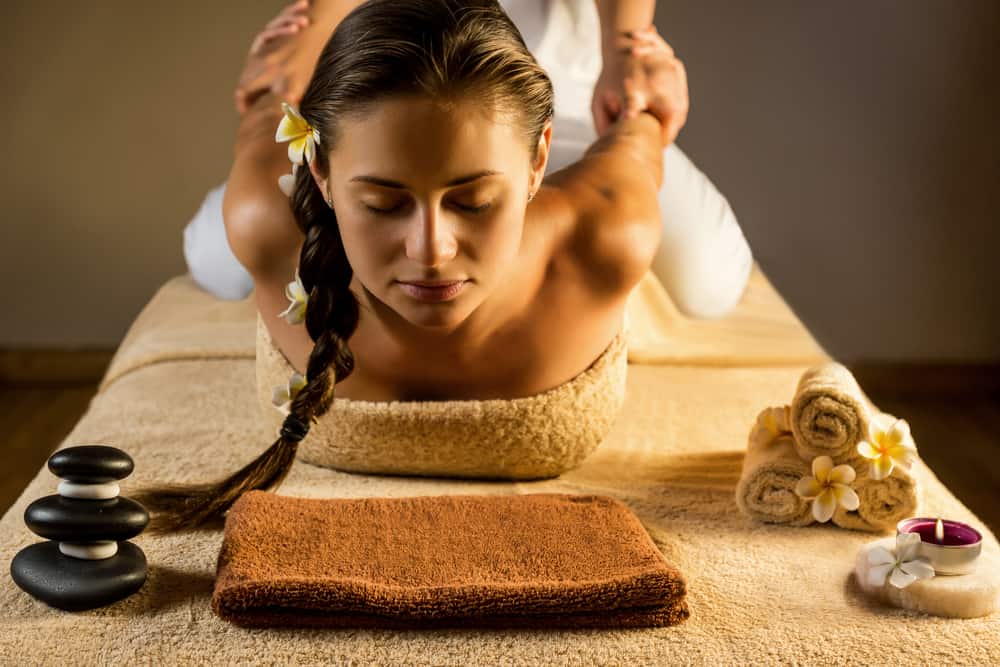
What it is: Thai massage is a special type of therapy which today combines different aspects of a number of different holistic therapies, including acupressure, yoga poses, and Ayurvedic principles. Traditionally, Thai massage does not use any oils or lotions, and the subject remains clothed during the massage.
A Thai massage session will differ slightly for everyone, depending on your individual needs, which your massage therapist will discuss with you prior to the massage. During the massage, the therapist may use different techniques such as kneading with the thumbs, knuckles, or fingers, walking on the subject’s back, gently stretching the limbs and muscles, and bending and rotating the joints.
Benefits:
- Greater mobility and freedom of movements
- Creates a deep sense of relaxation
- Eases knots and tension points in the muscles
- Increases overall sense of wellbeing
- Aids stress relief
More information about Thai massage.
Traditional Chinese medicine
What it is: Traditional Chinese Medicine is a blanket term which refers to a wide range of medicinal practices that have been utilised for thousands of years in China, as well as practices which continue to be widely in use today. It encompasses therapies including herbal medicine, massage, acupuncture, and dietary guidance in order to treat certain ailments, health concerns and psychological issues.
Benefits:
- Complements other modern forms of medicine well
- Effective against a huge range of ailments and health concerns
- All-natural
- Very few side effects
More information about Chinese Herbal Medicine.
Traditional Korean medicine
What it is: Traditional Korean Medicine is a lesser-known form of medicine than Chinese Traditional Medicine, and relies on a number of similar principles and theories as Chinese Medicine. It dates back thousands of years (the first evidence of its use is from around 3000 BC) and includes the use of acupuncture, meditation, aromatherapy, dietary advice, herbs and herbal teas, and other practices such as moxibustion.
Benefits:
- Effective in pain management
- All-natural
- Easy to incorporate aspects of it into your everyday life (in the case of meditation, aromatherapy and herbal teas)
More information about Traditional Korean Medicine.
Traditional Japanese medicine
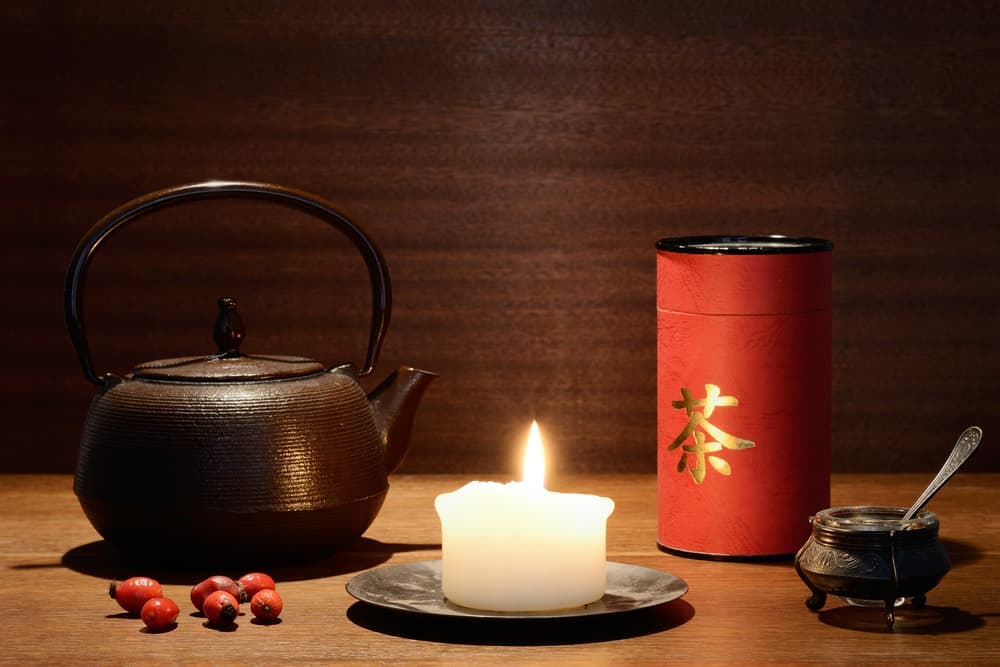
What it is: Traditional Japanese Medicine, referred to as Kampo Medicine, is actually the practice and study of Chinese Medicine which arrived in Japan in the 7th century, and has since been changed and adapted slightly to Japanese culture. More recently Kampo is heavily focused on herbs.
Benefits:
- Used to treat a wide range of conditions much the same as Chinese medicine
Traditional Mongolian medicine
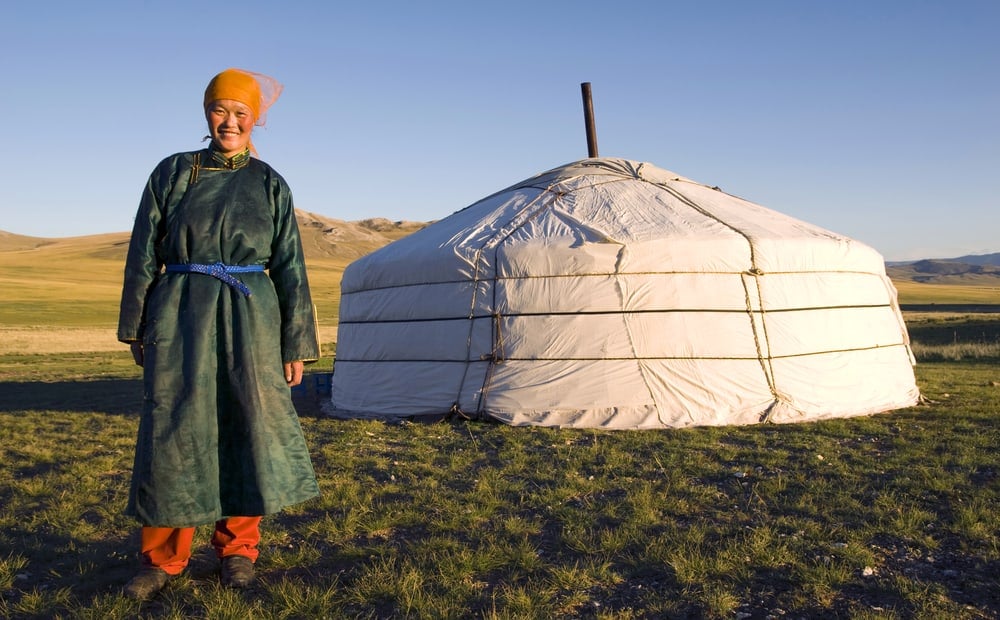
What it is: Traditional Mongolian medicine is a medical practice and set of medicinal and health theories which have been developed in Mongolia over hundreds of years. It is based on the theory that life and health is a complex network of interconnected internal processes, and involves treating various ailments with the use of techniques including moxibustion, minerals and herbs, water treatments, bone setting (which was likely an early form of physiotherapy), and historically, the topical use of animal blood.
Benefits:
- Promotes the importance of a good diet in improving health and wellbeing
- All-natural
- Generally safe to combine with other modern medicinal treatments
More information about Traditional Mongolian medicine.
Traditional Tibetan medicine

What it is: Traditional Tibetan medicine is influenced heavily by Tibetan Buddhism, which is centered around the belief that all pain and suffering in life is caused by ignorance, attachment and aversion. Tibetan Medicine is focused on re-balancing what it believes to be the body’s three humors - rLung (blood circulation, nervous system, and thoughts), mKhris-pa (which encompasses bodily functions such as thermoregulation, metabolism, and liver function) and Bad-kan (digestion, joint health and mental stability).
Benefits:
- Takes into account the health and functioning of the entire body when discerning the cause and treatment of a certain illness or health concern
- Focuses heavily on one’s mental well being and clarity
More information on Traditional Tibetan Medicine.
Thalassotherapy
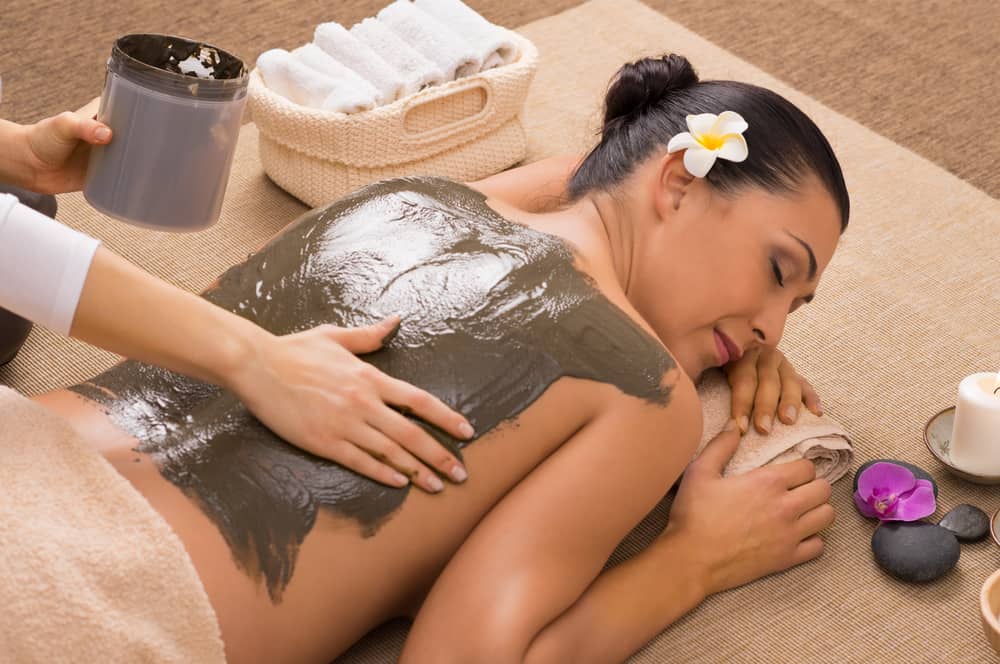
What it is: We’ve all heard of and experienced the healing power of the ocean. Thalassotherapy is just that - It’s a type of therapy which uses seawater, as well as marine mud and algae, to treat a range of illnesses and health concerns. Its name is derived from the Greek word “thalassa” which literally translates to “ocean”, and is based on the principle that seawater and sea plants have many natural benefits to the body due to their natural mineral content, which includes magnesium, potassium, calcium, sodium, and iodide. Thalassotherapy is generally performed in special thalassotherapy spas, which use seawater and algae collected from oceans which are free from pollution and other toxins which could be detrimental to your health.
Benefits:
- Extremely calming and relaxing
- Improves skin circulation
- Helps treat a range of skin-related concerns such as acne, eczema, and rosacea
More information on thalassotherapy.
Therapeutic Horseback Riding

What it is: Therapeutic horseback riding, which is considered one form of equine-assisted therapy, refers to the practice of an individual, often mentally or physically impaired in some way, learning to ride and handle a horse, with the help of a riding instructor in order to greatly improve their balance, coordination, cognitive function, and muscle tone. It has been found to be extremely beneficial for those with disorders including ADHD, cerebral palsy, depression, anxiety, autism, PTSD, and drug and alcohol addiction, and other mental health problems.
Benefits:
- Effective as an autism treatment
- Complements other traditional medicinal treatments
- Effective in treating various behavioural issues in children and adults
- Improves general posture and fitness
- Relieves depression and anxiety
More information on Therapeutic Horseback riding.
Therapeutic Touch
What it is: Therapeutic Touch is a form of healing which is centered on the principle that the human body is comprised of layers of energy fields, which often become imbalanced, causing the body’s natural healing ability to be weakened. A typical Therapeutic Touch session involves the therapist placing their hands on or near a patient’s body, and using their own energy to detect and re-balance their patient’s energy fields.
Benefits:
- Non-invasive
- Calming and relaxing
- Especially beneficial for patients who are in hospital or otherwise bed ridden
- Stimulates the body’s natural healing processes
- Helps alleviate pain and anxiety
More information on Therapeutic Touch.
Tibetan Eye Chart
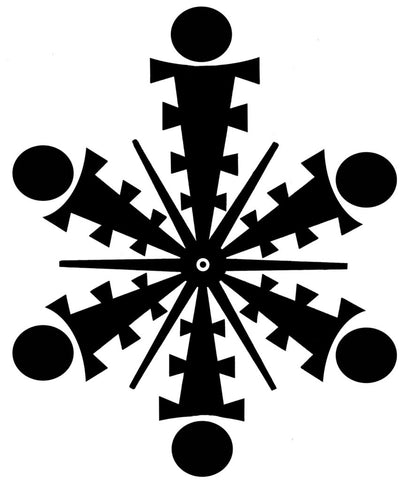
What it is: The Tibetan Eye Chart is a diagram which is used to perform a set of eye exercises in order to strengthen the muscles and nerves in the eyes, improve vision, and prevent any further vision problems developing later in life. The exercises are performed in a certain order and for around 30 seconds each, and exercises involve focusing on different parts of the chart in a range of specified patterns.
Benefits:
- Completely free
- Naturally strengthens the eye
- Improves vision
- Especially effective in treating astigmatism
- Takes just a few minutes a day
- Exercises can be performed anywhere in your your own time
More information about the Tibetan Eye Chart, and download your own chart along with exercise instructions, here.
Trager Approach
What it is: The Trager Approach is a form of movement education developed by Milton Trager, M.D. There are two versions - one in which the client is passive, and the other in which the client is active. In passive sessions, the client lays on a table and is treated by the certified practitioner by having their limbs moved in a series of stretches and postures. Active sessions are done in the client’s own time and involve performing a series of exercises given to them by their practitioner.
Benefits:
- Reduces the risk of muscle sprains and tears
- Limbers up the muscles and joints
- Improves posture and overall mobility
- Calming and relaxing
- Imparts a greater sense of overall wellbeing
More information on the Trager Approach.
Transcendental Meditation

What it is: Transcendental Meditation is a popular and hugely effective method of meditating whereby one uses mantras in order to influence positive mind states, stress reduction, and overall self improvement. It was introduced in the 1950s by Maharishi Mahesh Yogi in India, but has its roots in ancient Vedic practice. It is usually practiced for 15-20 minutes at a time, multiple times per day, and can be learned by attending various workshops and seminars, in order to be able to practice individually at any time.
Benefits:
- Improves sense of wellbeing
- Enhances creative ability
- Provides stress relief
- Aids sleep and relaxation
More information about Transcendental Meditation.
Trigger Point Therapy
What it is: Trigger point therapy, also sometimes called trigger point myotherapy, is a form of massage therapy which involves applying pressure to a specific trigger point on the body in order to alleviate muscle spasms in the area. Pressure is usually applied with a finger, knuckle, or elbow, for roughly 30 seconds at a time. The therapy is performed by a qualified massage therapist who is trained to identify and activate trigger points.
Benefits:
- Alleviates the pain of muscle spasms
- Improves range of movement
- Calms and relaxes the mind and body
More information on trigger point therapy.
Tui Na
What it is: Tui Na, also sometimes referred to as Tui Na massage, is a form of Chinese soft tissue and skeletal therapy in which the practitioner uses his or her hands to gently manipulate the muscles, bones and joints in order to relieve pain the body, promote relaxation, and treat a range of other disorders. It is often used instead of, or in conjunction with, other Chinese physical therapies including acupuncture or moxibustion.
Benefits:
- Helps improve circulation and relieve circulatory disorders
- Helps with gastrointestinal and digestive issues
- Alleviates pain and stiffness in the body
- Reduces stress, anxiety and insomnia
More information about Tui Na.
---
Visualisation
What it is: Visualisation, also sometimes called guided image therapy, is a type of self-therapy which involves the individual imagining a certain outcome to a situation, an objects, or an action. It has been shown to be effective in changing behaviour by triggering emotional and psychological changes as though the imagined outcome is actually occurring. Visualisation can be guided by listening to an audio track or the voice of a trained therapist, and can also be done without any guide.
Benefits:
- Can help treat addictions
- Eases stress and anxiety
- Can help one make difficult decisions more easily
- Helps stop bad habits
- Helps treat chronic pain
More information on visualisation.
Water Cure (therapy)

What it is: Water cure is the simple procedure of drinking 1 to 1.5 litres of water quickly upon waking. It is based on the theory that many people are simply dehydrated, rather than suffering from an actual illness or disorder, and that water can be a simple cure.
Benefits:
- Flushes the digestive system
- Improves hydration levels in the body
- Aids in digestion and bowel movements
More information on water cure.
Yoga

What it is: Yoga is a thousand-year-old form of spiritual and physical practice which involves various sets of postures, stretches, visualisations, and breathing exercises performed in a sequence. There are many different types of yoga, each with their own theories, benefits, and postures (asanas). Common variations include hatha yoga, vinyasa yoga, ashtanga yoga, and power yoga, and these can be practised in a class environment, or individually.
Benefits:
- Increased flexibility
- Gently strengthens the muscles
- Promotes a more calm and centred mind
- Realigned joints and muscles
- Alleviates stress and anxiety
- Aids sleep
More information about yoga.
Zang Fu Theory
What it is: Zang fu theory is an aspect of traditional Chinese medicine which categorises the organs into the human body into two categories: Zang organs, which include the heart, lungs, liver, kidneys, spleen, and pericardium, and the fu organs, which include the stomach, gallbladder, small intestine, large intestine, bladder and San Jiao (Triple-Warmer). The theory also states that each organ has a corresponding element (including wood, metal, fire, earth and water). Medical treatments associated with Zang Fu theory may include any combination of acupuncture, prescriptive diets and eating patterns, and herbal remedies.
Benefits:
- Realigns and rebalances the body
- Takes a holistic approach to health for the whole body
More about Zang Fu theory.
---


